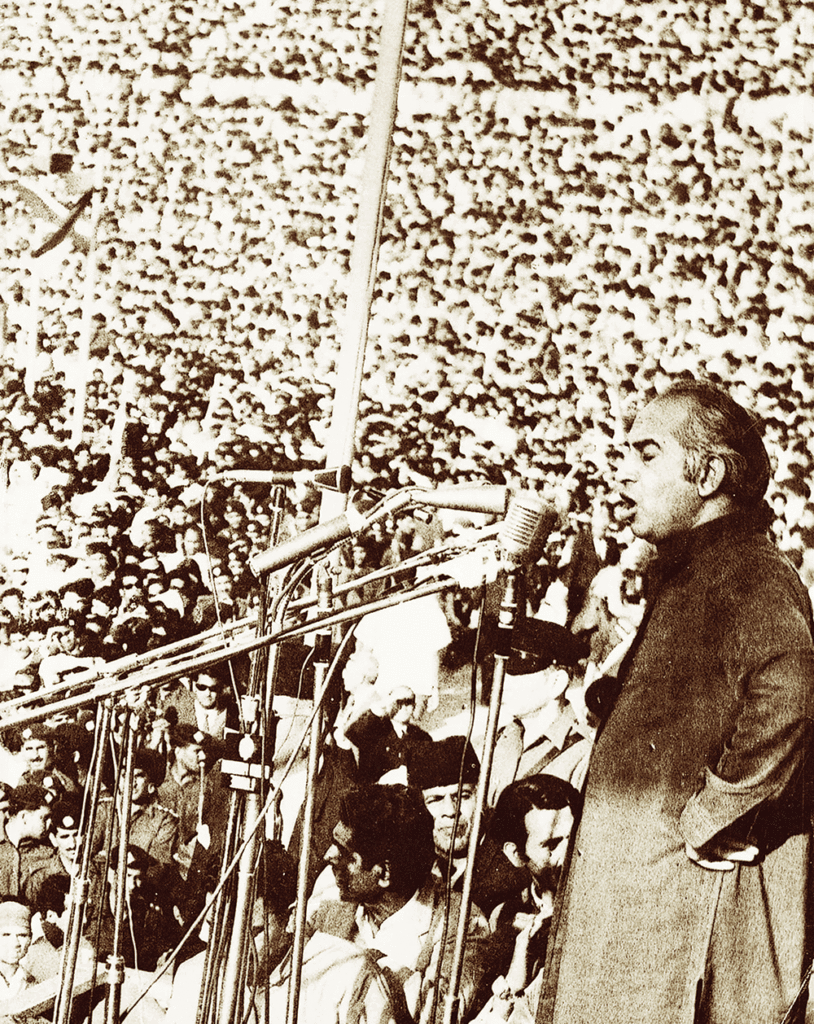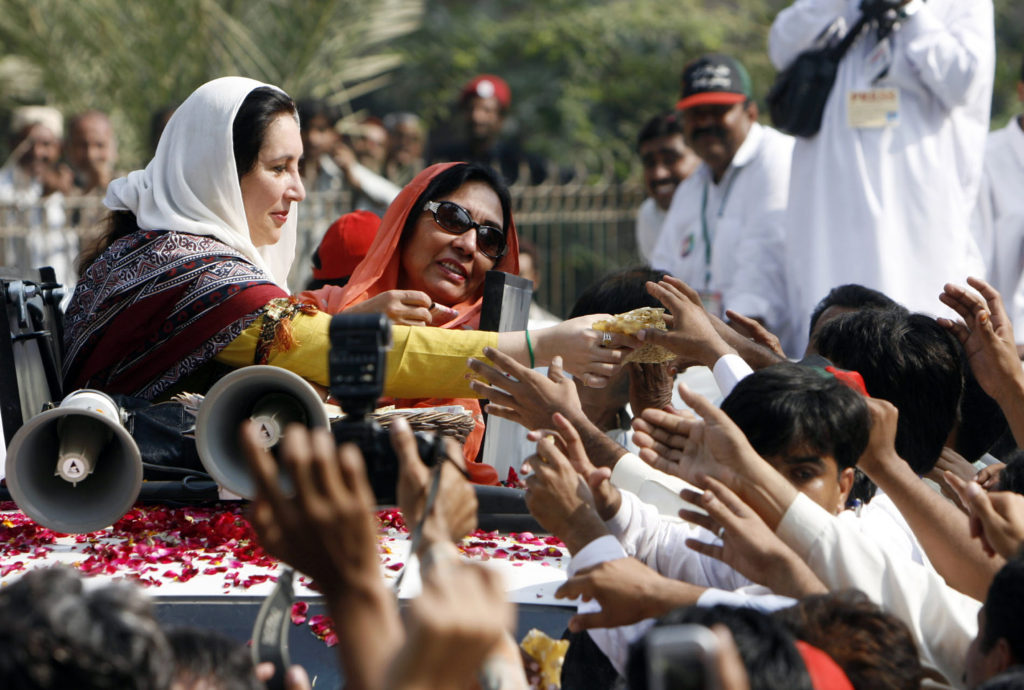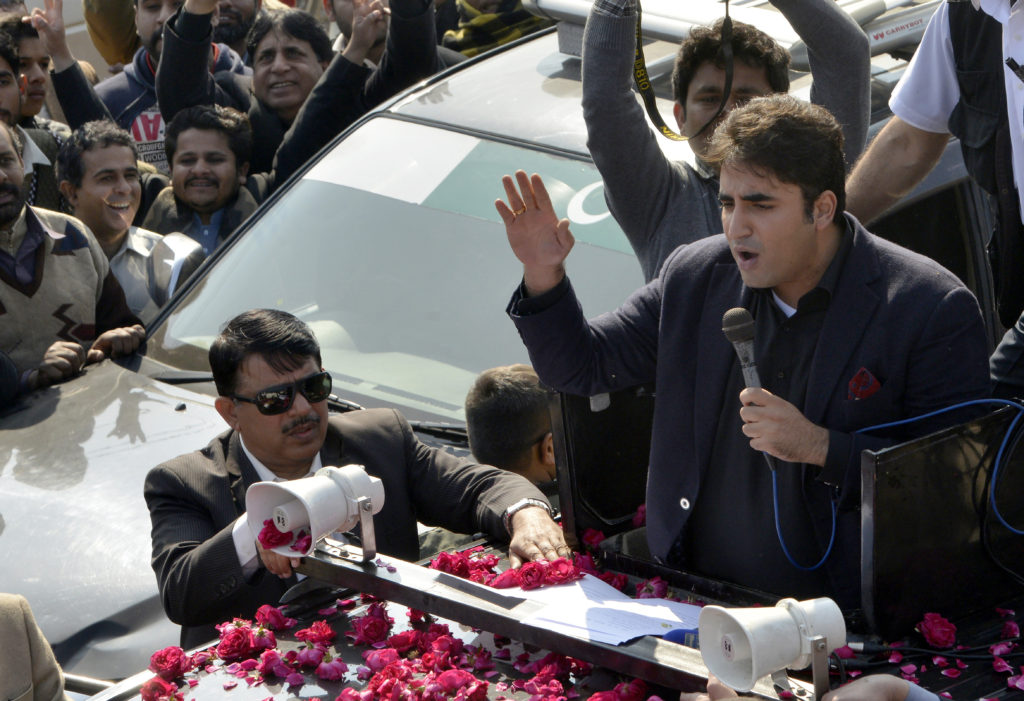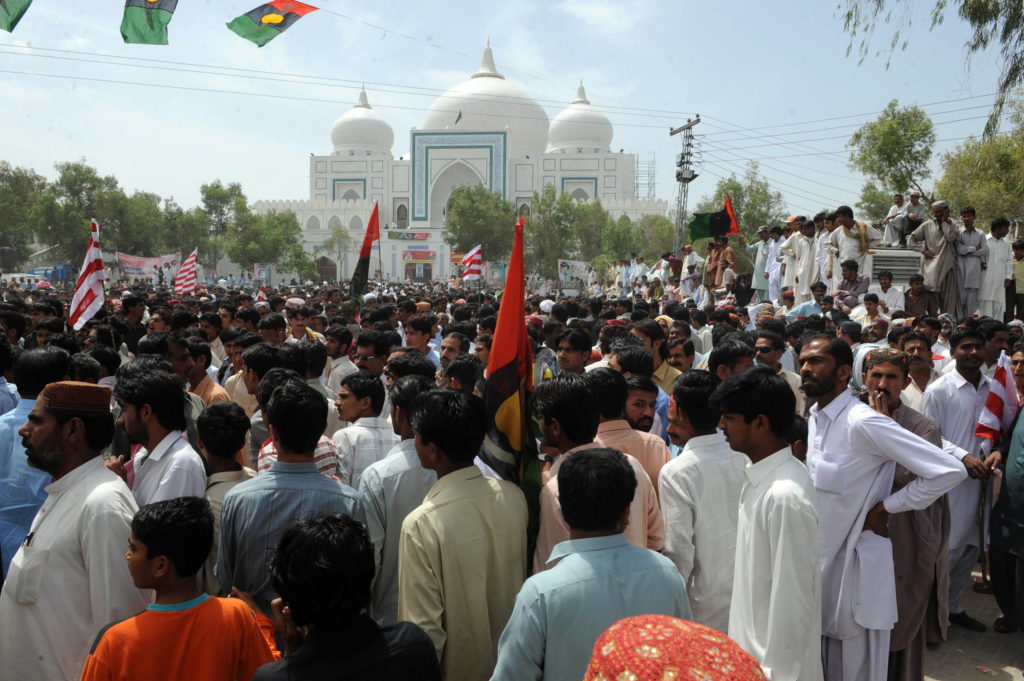The PPP at 50: Mid-Life Crisis?
By I. A. Rehman | Cover Story | Published 8 years ago

The Pakistan People’s Party (PPP) is celebrating the golden jubilee of its founding at a most critical moment in its history. Since 1979, when its founder and prime minister of the country for four years (1973-1977), Zulfikar Ali Bhutto, was executed after a controversial trial, PPP has been weathering alternating cycles of rise and decline. It has up till now surprised friend and foe alike with its resilience and capacity to come back from the brink to retain its hold on the Sindhi masses. But today it is not possible to predict whether it will be able to withstand in 2018 (assuming that elections will be held no later than June 2018) the many-sided challenge to its leadership of the Sindhi people.
Times have significantly changed since 1967 when the PPP was founded. US-USSR superpower rivalry has undergone a paradigm shift. The socialist bloc has disappeared. The Soviet Union now exists only in books written by its denigrators. China’s version of Socialism/Communism cannot easily be understood outside its frontiers. The war in Afghanistan has assumed a new dynamic. After the adoption of the 18th Amendment by the National Assembly in 2010, intra-federation issues have acquired new forms. The unity of Muslim peoples has been torn asunder by armed extremists trying to rewrite the fundamental postulates of Islam. And the friends of PPP in Indonesia, Iran, Syria, Libya and Algeria, from whom the party drew strength in times of trial, have been relegated to the dustbin of history.
All of these developments have had their impact on Pakistan. The PPP leadership could not have failed to observe this march of events. What the people should want to know is the party’s response to the challenges today’s Pakistan faces.
The Pakistan People’s Party was founded at a time when the people not only wanted a change, they also believed change was possible. Ayub Khan’s grip on power and his popularity had been on the wane since January 1965. His victory in the presidential election over Miss Fatima Jinnah was generally believed to have been secured through unfair means. He had lost a war with India that the people had been led to believe Pakistan had won. Armed with this belief, they could not but see the Tashkent Agreement as a betrayal, and Bhutto’s ouster from the cabinet an unpatriotic act. Bhutto realised the strength of the public feeling against Ayub and how it had swung in his favour as he travelled by train from Rawalpindi to Larkana and was greeted by large crowds at almost all stops, especially in the Punjab.
But Bhutto was not sure of his political path. He went abroad to have a look at Pakistan from a distance and to seek partners from among the Pakistani diaspora. He drew a blank with Tariq Ali, the hero of the youth uprising in the 1960s, but was fortunate in winning over J. A. Rahim, who could be both, a comrade and a mentor.
Back home he wanted more time before padding up for a long innings, but the Ayub regime was in a hurry to challenge him to battle. Governor Musa Khan’s ham-handed attempt to put him in a cage perhaps forced him to act sooner than he wanted. A meeting with Dr Mubashir Hasan, who had been working on ideas of change from below, from katchi abadis in fact, convinced him that the time had come to form a party.
(Nov 30-Dec 1, 1967) convention held at Dr Mubashir Hasan’s residence in Gulberg, Lahore. At that moment, there were many things that attracted local youth and professional groups to the party, all of them radicalised by the Vietnamese people’s heroic resistance to US assaults. The party began its life with a set of foundation papers in which all matters of concern to the people had been discussed — a first for any political party in Pakistan. The catchwords coined to attract the people — “Islam is our faith; democracy is our politics, socialism is our economy, and all power to the people” — engendered strong appeal among politically conscious citizens. And the popular slogan — roti, kapra aur makan — had no comparable predecessor in Pakistan’s history, and has not been improved upon since.
The PPP platform attracted a large number of activists who had until then been attached to left-of-centre parties — the National Awami Party (NAP) in particular — and were getting bored with their leaders’ sedentary politics and their failure to lock horns with the dictator. A large number of them rushed to find space under the new party’s banner. They were followed by an army of poor urchins who knew no fear.
The Ayub government’s success in becoming extremely unpopular in East Bengal and the launch of the Agartala Case helped Bhutto attract the dissidents, especially workers, to his side. He crisscrossed West Pakistan and went to towns and villages no politician had visited before, and in the process, established a strong bond with the people. They waited for hours for him to arrive and came to believe that he was a prince who could actually come to power.

The Round-Table Conference (RTC) of 1969 presented Bhutto with a script he gladly accepted. While the prospect of Ayub’s fall was welcome, no-one wanting change could be enthusiastic about a return to the pre-1958 days, as symbolised by the constitution of 1956. A compromise at the RTC excited neither Bhutto nor Bhashani, nor the pro-change workers, students and professional groups.
An indication of Bhutto’s popularity came in March 1970 when the Toba Tek Singh Kisan Conference, attended by Bhashani, was literally hijacked by PPP activists.
The elections of December 1970 were an electrifying event in both wings of the country. In East Bengal, the electorate swept all parties aside in favour of Sheikh Mujib’s Awami League, and in the western wing the three-year-old PPP won a clear mandate for change, especially rejecting the religio-political parties, and electing PPP candidates not only in Sindh, but also on 62 of Punjab’s 80 seats — many of them unknown to the voters.
The PPP emerged as the majority party in West Pakistan, but mistrust of each other prevented Bhutto and Mujib from joining hands to defeat Yahya Khan’s game for prolonging army rule. The result was a senseless war in East Bengal, and Pakistan’s dismemberment. During this period Bhutto lost some ground among middle-class liberals as they suspected him, not without some reason, of consorting with the generals and becoming party to the disintegration of the state. His remark after the launch of the military action — “thank God, Pakistan has been saved” — hurt the people, including his own followers, more than his remark to BBC at the dawn of the 1970 election, that he had saved Pakistan from Communism.
That notwithstanding, Bhutto managed to assume power from Yahya Khan, taking over as President and Chief Martial Law Administrator (CMLA).
There is no doubt that the task of “collecting the debris,” as Bhutto put it, was extremely daunting. The people were demoralised. They had lost another war with India. The state created by the people barely 24 years earlier had been dismembered. Nearly a hundred thousand Pakistani soldiers were prisoners of war in India. The US had cut off all aid and there was no money to run the state.
The Bhutto government managed to keep the country afloat. Whether he extracted a helpful response from Prime Minister Indira Gandhi through his art of diplomacy, or with his tears, or with the mediation of President Nixon or Prime Minister Kosygin, the fact is that Bhutto succeeded in getting all the soldiers back home — freeing them from fears of trial for war crimes by Bangladesh/India — and the West Pakistan territory lost to India during the war was recovered.
During the early phase of his government, Bhutto gave priority to the nationalisation of industries, and while this step pleased the pro-socialism elements in the party, the long-term effects of building a public sector without trained cadres was bound to create problems. Bhutto also had no patience with the workers who wanted immediate relief and the radical left-wing in his party. Thus workers in Karachi were fired upon on occasion and many of them killed. Mukhtar Rana had to be thrown into the wilderness, and Bhutto’s friends, Husain Naqi, and later, Meraj Mohammad Khan, were put into prison.

Gaining confidence month by month, Bhutto started planning for a long tenure. The adoption of a new constitution largely acceptable to all parties was a huge achievement. He invested in long gestation projects, such as steel and fertilisers, the fruits of which were to be reaped by Zia-ul-Haq, and managed to keep wage increase ahead of increase in the cost of living till 1975 at least. But by the end of 1974, some of his policies had put Pakistan on a perilous course.
First, the policy of accommodating the opposition that Bhutto had displayed in 1972 was given up soon after the constitution was adopted. The dismissal of the NAP government in Balochistan , the resignation of the NWFP (now Khyber Pakhtunkhwa) coalition government and the banning of NAP, followed by NAP leaders’ trial by a special tribunal and the start of an armed conflict in Balochistan, turned the PPP government away from governing by national consensus.
Secondly, Pakistan started work on acquiring nuclear weapons, a tremendously popular programme, but one which has caused the country very serious problems.
Thirdly, Pakistan joined Saudi Arabia in raising the banner of faith-based nationalism vide the Islamic Summit, the distressing results of which are now evident.
Fourthly, the second amendment to the constitution of 1974 put the country on the road to becoming a theocracy.
Fifthly, Bhutto’s belief that political parties had no role in a developing country, where the people could only be governed through fear, led him into the error of not only undermining the opposition parties but also ignoring the need to transform the PPP from a movement into a well-knit, democratic outfit.
Along the way, his left-leaning colleagues left after fighting among themselves. The working class had been alienated along with the middle-class professionals who had serious reservations about the use of violence and torture on political opponents. And at some point in 1976, Bhutto began to realise that he was fast losing his friends. Resultantly, Bhutto called for general elections one year earlier than they were due
Winning the election did not appear to be a problem, but excessive reliance on the bureaucracy instead of the party workers and the nomination of zamindars, who had been defeated in 1970 as party flag-bearers, resulted in the great disorder of 1977. General Zia-ul-Haq, who had camouflaged his ambition behind a broad grin, struck when the government and the opposition alliance had reached an accord.
Bhutto was still greatly popular and a single demonstration of this fact in Lahore rang alarm bells in Zia’s camp. It decided to have Bhutto liquidated through a minutely orchestrated legal-looking process.
From Bhutto’s hanging in April 1979 till the general election of 1988,after General Zia’s death had put an end to his plans to consolidate the theocratic character of the state, the PPP was kept alive by the spirit of resistance and a great capacity for sacrifice and suffering shown by Begum Nusrat Bhutto and Benazir Bhutto.
But Bhutto’s successors found his legacy hard to sustain because the sophisticated Sindhi landlord had built a party to suit Punjab’s political predilections. The play on the theme of betrayal at Tashkent, the reluctance to oppose the one-unit “ till we come to the bridge,” the call to fight India for a thousand years, the pandering to the religious lobby, the so called resolution of the 100-year-old Punjabi problem with the Ahmadi community, and the hard line in regard to Bengali Pakistanis’ aspirations for their democratic rights, had all been designed to establish the party’s hold on Punjab. But the props required to sustain this policy were no longer available to PPP in 1988.
The religious banner had been snatched away by the pucca custodians of the people’s faith, confrontation with India had become impossible, world socialism was in retreat, and the slogan. “Jaag Punjab” was about to be raised during the 1988 election campaign.
Under Benazir Bhutto ‘s leadership and on the crest of a wave of sympathy for the daughter of the unjustly crucified Bhutto, the PPP was able to emerge as the largest single party in the National Assembly in the 1988 elections and her claim to be the prime minister had to be conceded. But General Hamid Gul had made sure that Punjab not only remained out of her control but was also able to harass her with its autonomy demands. At the federal level too, Benazir Bhutto was obliged to share power with the permanent establishment on the latter’s terms. The state apparatus outside her control was more powerful than the rump of the administration she was left with to run the country. Throughout the 20 months she was allowed to stay in the PM House, she was kept busy with efforts to find room for using her authority. No attention could be paid to the party’s reorganisation that had been necessitated by changes in the ground reality, especially after the decision to drop socialism from the party’s objectives. Worse than anything else, the party was unable to discipline the bad coins in its ranks who were out to grab whatever they could lay their hands upon.
The story of Benazir Bhutto’s second stint as prime minister was not much different, except for her tenure being a bit longer than the earlier one. Punjab was not in the hands of her rivals, but the friends she trusted for managing the key province offered her little political support. The party was there, but the lines distinguishing it from the right of centre formations got dimmer and dimmer. While Benazir Bhutto spent her days in exile, the party went to sleep.
Came General Musharraf and managed to make himself insecure and unpopular within a short time. Persuaded by foreign friends he threw a rope of thorns to facilitate Benazir Bhutto’s return. But Benazir Bhutto was too shrewd to bank entirely on the NRO. She made a strong bid to reclaim her democratic heritage and paid for it.
What is the PPP’s scorecard at the age of 50? For a party that began by challenging some of the basic assumptions of the country’s politics — albeit from the weak wicket of populism — to stay in contention is quite an achievement. Its greatest accomplishment has been that it helped the masses discover their voice, to become active participants in the struggle for change. Although it did not satisfy the expectations of womenfolk, it did create an environment in which they could breathe a little more freely, and increase the space available to them.
The party cannot be denied credit for the very first steps towards making Pakistan a genuine federation through the 18th Amendment and the last National Finance Commission (NFC) Award. Perhaps the party’s most valuable contribution to national politics has been its refusal to surrender to extremists even after paying for this policy with the life of Benazir Bhutto, its greatest asset after Zulfikar Ali Bhutto.
On the negative side, the party is paying for its failure to set a model of democratic governance, and its inability to realise that by failing to fulfill the people’s expectations of an egalitarian social order, has killed hope itself.
Ironically, the PPP’s importance and the need for its survival has been realised after its virtual ouster from national politics (except for some rearguard action in the Senate). The political space today is occupied almost entirely by parties of the right and extreme right and the dominant faction has thrown itself at the mercy of rabid obscurantists.
What is the PPP’s future? Resurrecting a party on the decline is much harder than organising a new party. A serious effort to rehabilitate the PPP must begin by realising that the days of becoming popular with empty rhetoric and sheer bluster are gone.
The party must try to understand why it has lost Punjab. Its decline in that province began with the ill-advised nationalisation of ginning factories and rice husking mills before the 1977 polls and this, at a time when Punjab’s bourgeoisie was beginning to discard its traditional feudal leadership. The party made no worthwhile attempt to understand its loss of the cities — Lahore, Faisalabad, Multan, Rawalpindi, Sialkot and Sheikhupura — that had been its bastions of strength in 1970. It meekly receded into the landlord-dominated rural areas of Southern Punjab. Its half-hearted attempt to consolidate its South Punjab base boomeranged; the weak campaign failed to galvanise the Seraiki belt and further alienated central Punjab.

PPP gather outside the mausoleum of Zulfikar Ali Bhutto
More crucial than its neglect of Punjab has been the failure of the party to shed its robes of a Sindhi wadera party. The waderas will increasingly become liabilities instead of sources of strength. The present character of the party repels the working class, the peasantry, the rising generation of urban youth and the surviving remnants of the intelligentsia. In short, the PPP needs a new national thesis that promises to take all parts of the country forward in the fields of democracy, human rights and scientific exploration. It has to offer credible answers to the threat of climate change and the enslavement of local governments by provincial satraps.
Above all, the PPP can have no future without erasing its image as a corrupt caucus. The party’s current public image is an unfavourable one of an extremely corrupt organisation. Nothing short of ruthless ‘loadshedding’ at the top, along with the intelligent grooming of Bilawal Bhutto-Zardari, will offer the party a chance for its regeneration. It should have its sights on a post-2018 Pakistan. Meanwhile, it should work hard to regain its constituencies of labour, peasants, students, minorities, women and middle class liberals and entrepreneurs. The going will be extremely tough, but then politics is a game for the stout-hearted, who dare to look into the future without being riveted by the past.
Between 1988 and 2013, the PPP’s electoral fortunes kept fluctuating; it kept securing nearly one third of the total votes cast in elections held during 1988-2002. In the 2008 elections, held soon after the assassination of Benazir Bhutto, despite the sudden return from exile of PML-N chief, Nawaz Sharif, the party polled a record 10 million votes. But in the 2013 election, the party’s vote bank shrank to the lowest level ever. At the national level it received only 15.4 per cent of the total votes cast, while the N-League polled over 31 percent and PTI got a little more than 17 per cent. While the PPP retained its hold over Sindh, its vote bank in Punjab melted away, and with 2.3 million votes, it dropped to fourth position after the N-League, PTI and the group of independent candidates contesting.
To some extent, the 2013 debacle can be attributed to the incumbency factor. The previous PPP-led federal government (2008-2013), the only government in the country’s history to complete its five-year term, had started on a very positive note. The grand coalition between the two largest parties, the PPP and the N-League, a sweet fruit of the Charter of Democracy, could have deepened democratic traditions, but the chance was wasted because of the shortsightedness of both parties. From that point onward the government’s main preoccupation was to save itself through compromises with power brokers. It barely survived its trial by a proactive judiciary.
The good things this government did on rare occasions — a moratorium on the death penalty, ratification of the key international covenants and conventions and enactment of some women-friendly laws — pleased a small part of the intelligentsia, but reduced the party’s standing with the religious orthodoxy and the entrenched champions of patriarchy.
Now, the party finds itself fighting for survival against heavy odds.
Mr. I.A. Rehman is a writer and activist living in Pakistan. He is the secretary general of the Human Rights Commission of Pakistan Secretariat.


